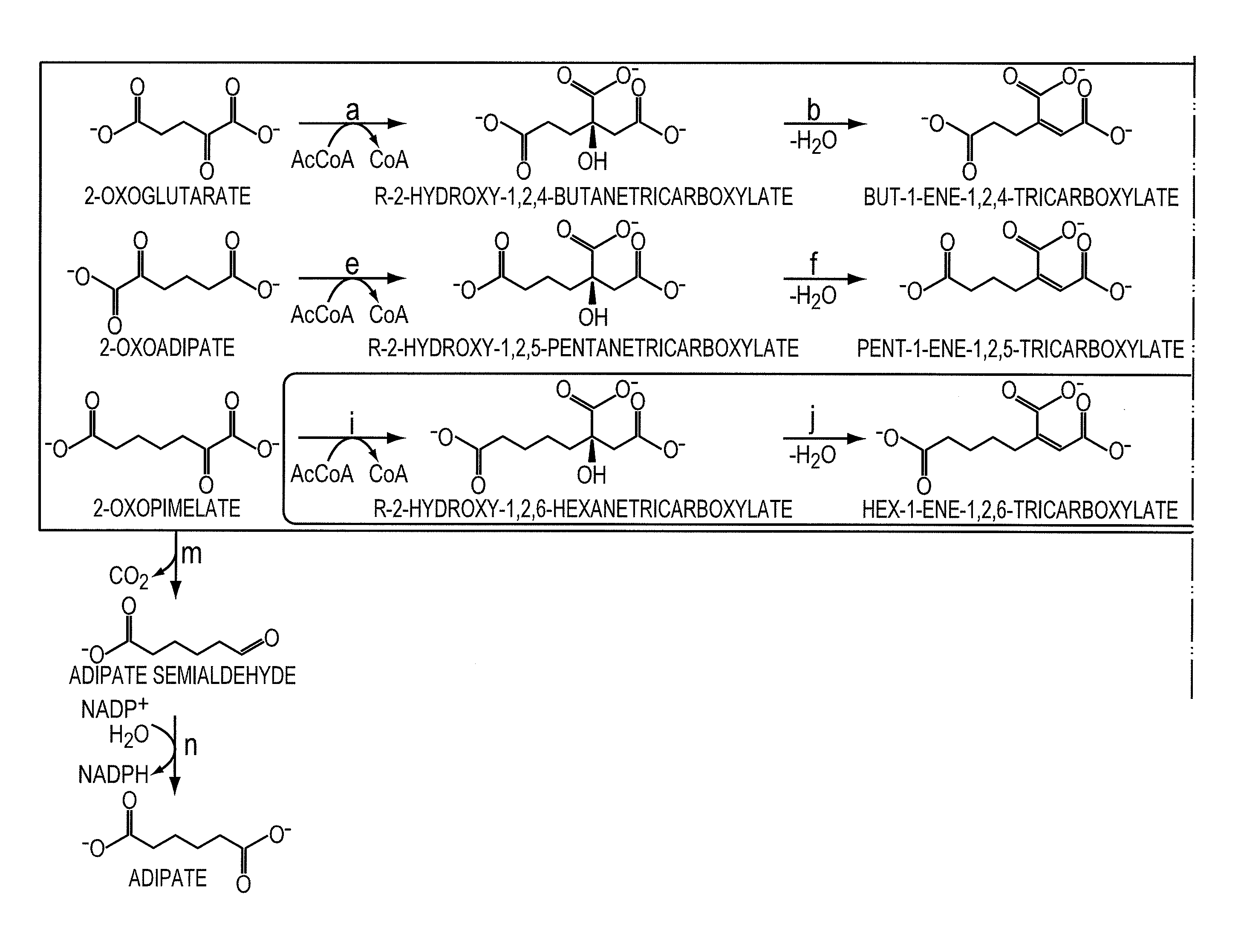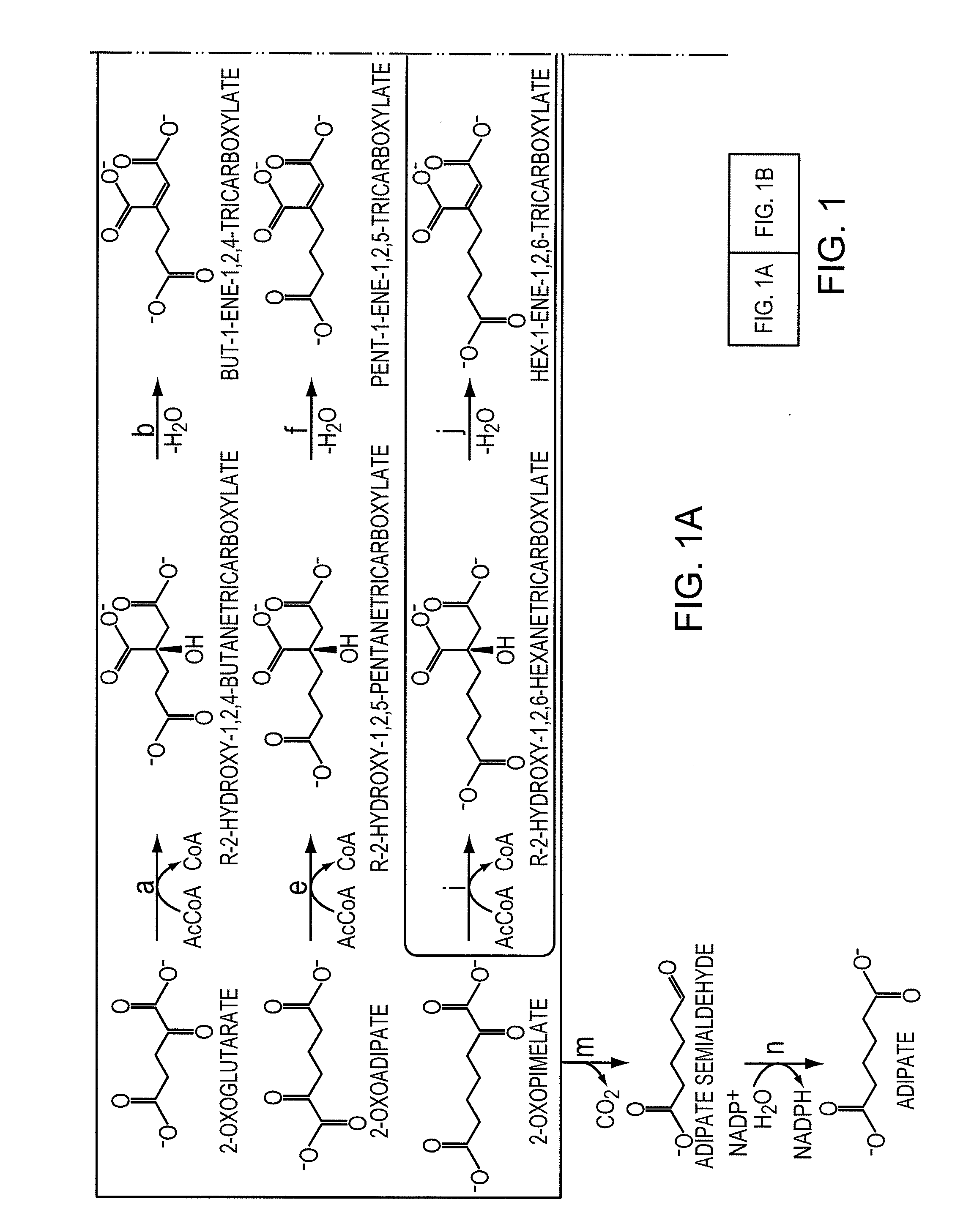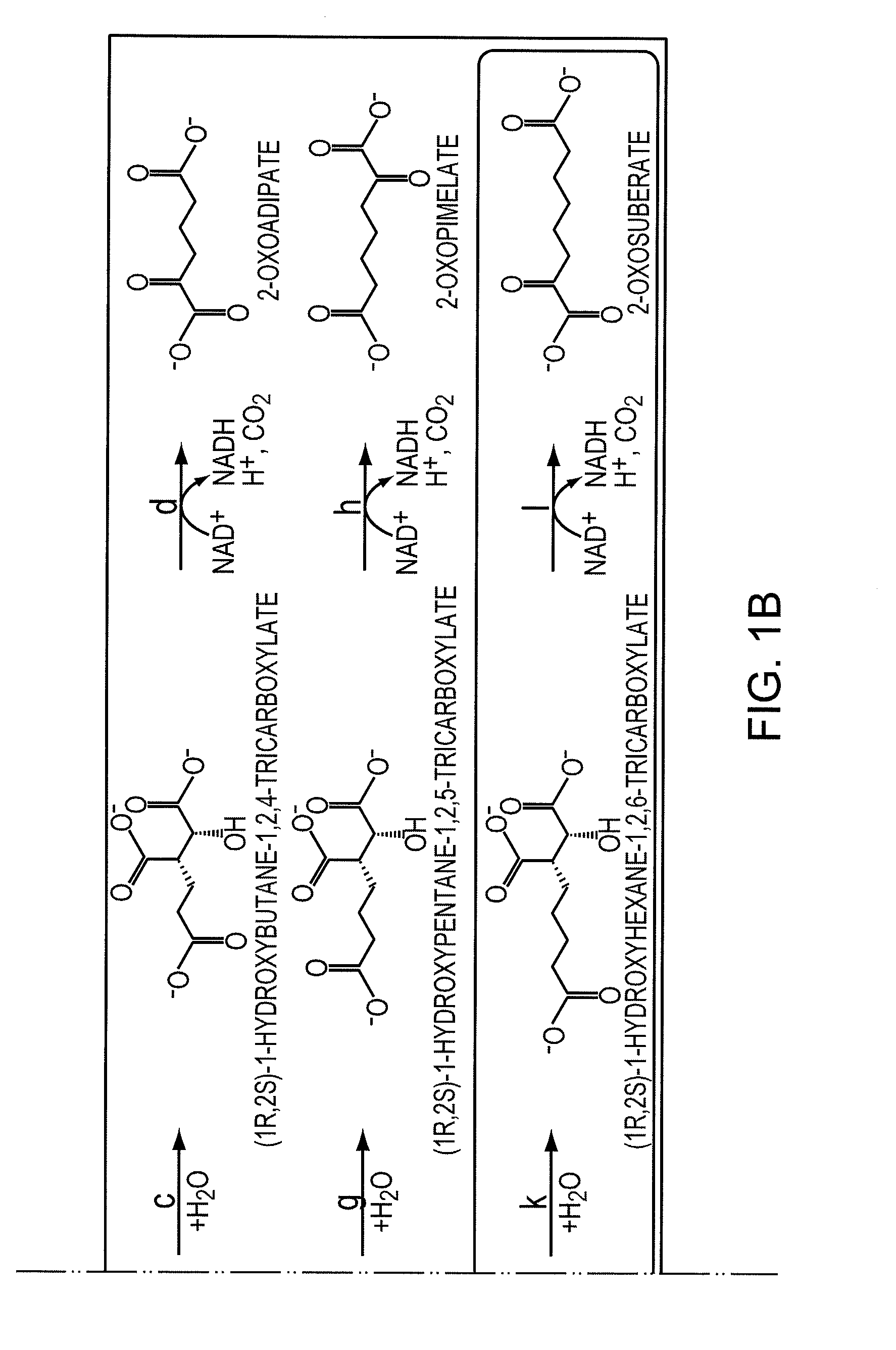Biological Synthesis of Difunctional Alkanes from Carbohydrate Feedstocks
a technology of carbohydrate feedstock and difunctional alkane, which is applied in the field of biological synthesis of difunctional alkanes from carbohydrate feedstocks, can solve the problems of less widespread use of microorganisms in the production of industrial chemicals
- Summary
- Abstract
- Description
- Claims
- Application Information
AI Technical Summary
Benefits of technology
Problems solved by technology
Method used
Image
Examples
Embodiment Construction
[0026]As used herein, the following terms and phrases shall have the meanings set forth below. Unless defined otherwise, all technical and scientific terms used herein have the same meaning as commonly understood to one of ordinary skill in the art.
[0027]The singular forms “a,”“an,” and “the” include plural reference unless the context clearly dictates otherwise.
[0028]The terms “comprise” and “comprising” are used in the inclusive, open sense, meaning that additional elements may be included.
[0029]The term “including” is used to mean “including but not limited to”. “Including” and “including but not limited to” are used interchangeably.
[0030]All publications mentioned herein are incorporated herein by reference. The publications discussed herein are provided solely for their disclosure prior to the filing date of the present invention. Nothing herein is to be construed as an admission that the present invention is not entitled to antedate such publication by virtue of prior inventio...
PUM
| Property | Measurement | Unit |
|---|---|---|
| chemical properties | aaaaa | aaaaa |
| catalytic promiscuity | aaaaa | aaaaa |
| catalytic promiscuity properties | aaaaa | aaaaa |
Abstract
Description
Claims
Application Information
 Login to View More
Login to View More - R&D
- Intellectual Property
- Life Sciences
- Materials
- Tech Scout
- Unparalleled Data Quality
- Higher Quality Content
- 60% Fewer Hallucinations
Browse by: Latest US Patents, China's latest patents, Technical Efficacy Thesaurus, Application Domain, Technology Topic, Popular Technical Reports.
© 2025 PatSnap. All rights reserved.Legal|Privacy policy|Modern Slavery Act Transparency Statement|Sitemap|About US| Contact US: help@patsnap.com



